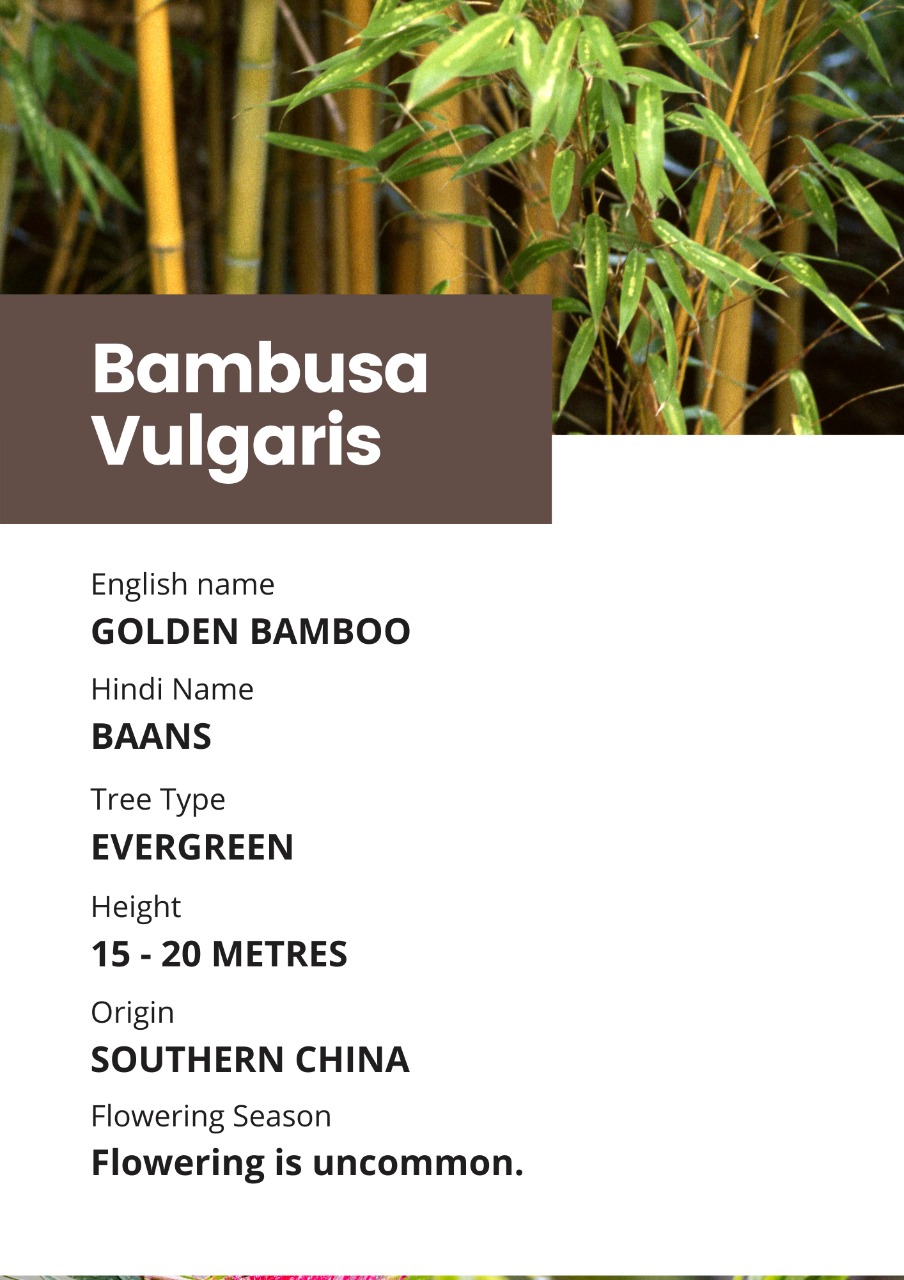
GOLDEN BAMBOO
Bambusa vulgaris:
Family: Bambusa vulgaris belongs to the family of grasses.
Common Name: It is commonly known as golden or striped bamboo in English and Baans in Hindi. The name Golden bamboo comes from the bright yellow colour of the plant’s stem.
Flowering period: Flowering is not very common.
Habitat: The tree is native to Southern China. Bambusa vulgaris often grows spontaneously and flourishes in moist soils and humid environments. However, the plant is immensely adaptive and can grow in a variety of soils and altitudes.
Uses: The tree is commonly used in light construction such as making houses, huts, boats and a variety of objects like furniture, musical instruments and handicrafts. Rings prepared from the split culms are put into ear perforations by the Tunkul-Naga tribes of Manipur. As a medicine, chloroform extract of the leaves is used against Mycobacterium tuberculosis. Tabasheer from culm internodes is used to treat infantile epilepsy, fever and hematuria, kidney troubles, bark astringent and emmenagogue (to stimulate or increase menstrual flow), and as an abortifacient (to cause abortion).
Key features: Bambusa vulgaris is the most commonly cultivated form of bamboo in SouthEast Asia. The tree is evergreen and moderate-sized, growing anywhere between 8 to 20m tall. The culm (hollow stem) of this tree is glossy. The bottom is erect while the top is slightly arched. The culm has internodes that are 25-35cm long, and the bottom nodes have a narrow ring of roots and are covered with brown hair. The tree has several clustered branches with 1-3 dominant branches. They usually occur from mid-culm to the top. The leaves are narrow and long with an average length of 15-25cm.